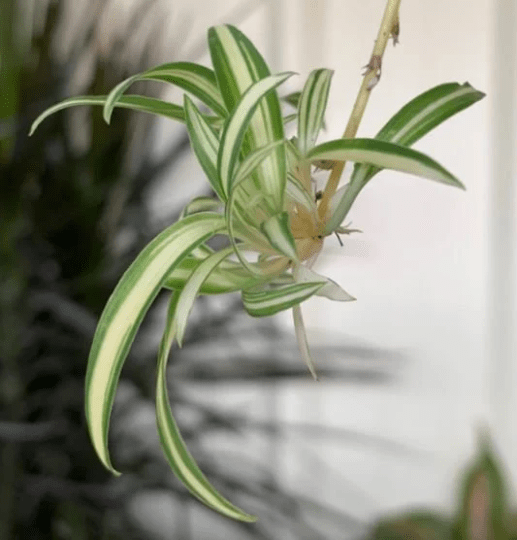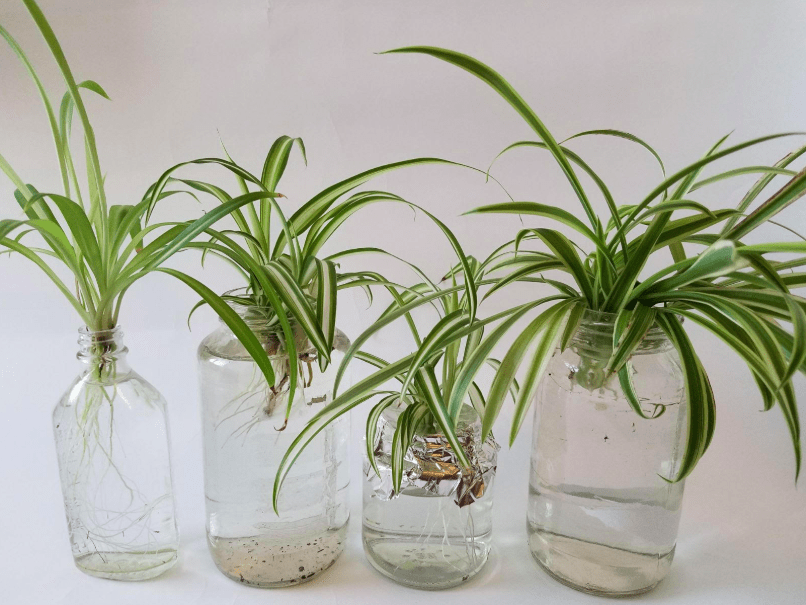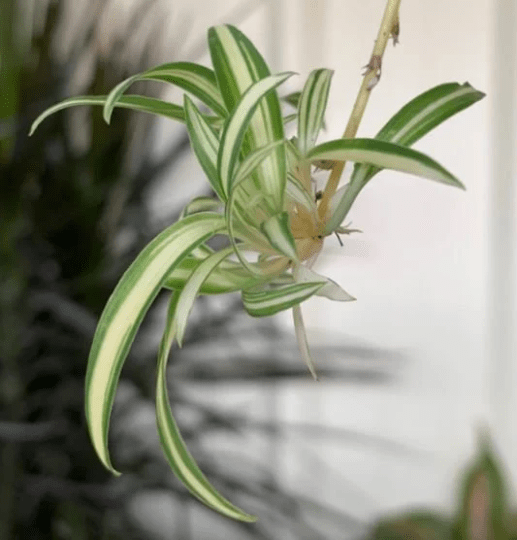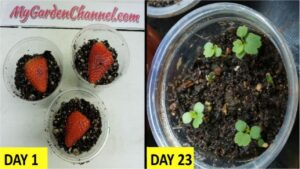Care of spider plant is crucial to get long hanging spider plant babies.
Spider plants (Chlorophytum comosum) are popular indoor plants known for their ability to purify the air and their ease of care. They are native to tropical regions of Africa and produce long, narrow leaves and small white or yellow flowers. Spider plants grow well in bright indirect light, but can also tolerate low light conditions.
They prefer well-drained soil and should be watered regularly, allowing the soil to dry out slightly between waterings. Spider plants can be propagated by removing the offsets or “spiderettes” that grow from the main plant and planting them in soil. They are also known for being low maintenance and can adapt to a wide range of indoor environments.
Caring For Your Spider Plants Indoor
Caring for a spider plant is relatively easy. Here are some basic guidelines to follow:
- Light: Spider plants prefer bright, indirect light but will tolerate low light conditions. Avoid direct sunlight as it can scorch the leaves.
- Water: Water your spider plant thoroughly, but allow the soil to dry out slightly between waterings. Spider plants are sensitive to over-watering and can develop root rot if left in soggy soil. Yellow or brown leaves could be a result of over or under-watering.
- Temperature: Spider plants prefer temperatures between 60 and 75 degrees Fahrenheit, and they do not tolerate drafts or extremes of heat or cold.
- Soil: Use well-draining, peat-based potting soil for your spider plant.
- Fertilizer: Fertilize your spider plant every 2-3 weeks during the growing season with a balanced, water-soluble fertilizer.
- Humidity: Spider plants prefer moderate to high humidity. You can increase humidity by placing a tray of water near the plant, misting the leaves, or using a humidifier.
- Pruning: Spider plants will grow long, trailing stems with clusters of leaves. Prune these stems as desired to control the plant’s size and shape.
- Propagation: Spider plants can be easily propagated by rooting stem cuttings in water or soil. Leaves can also be used for propagation.
By following these basic guidelines, your spider plant will thrive and add a touch of greenery to your home.

Spider Plant Babies
Spider plants form “babies” or offsets on the long, trailing stems that grow out from the base of the mother plant. These offsets are small, plantlets that form at the base of the mother plant.
They are genetically identical to the mother plant and will grow into new, independent plants if they are separated and planted.
The offsets form when small, white flowers appear on the mother plant, which then produce tiny, round berries containing seeds. As the berries mature, small plantlets begin to form at the base of the mother plant, growing roots and leaves of their own.
Over time, these offsets will become larger and more established, eventually becoming large enough to be separated from the mother plant and planted in their own container.
It is possible to propagate spider plants by planting the offsets directly into soil or even by placing the offsets in water for a few weeks for roots to form.
It is also possible to propagate spider plants using the leaves. Simply place the leaf with a node in water or soil, and a new plant will grow from the node.
Spider Plant Propagation

Yes, growing spider plant babies or offsets from the mother plant is a simple process. Here are the steps to follow:
- Gather your materials. You will need a sharp, clean pair of scissors or pruning shears, a small container filled with well-draining potting soil, and a plastic bag or clear plastic container with a lid to create a mini greenhouse.
- Locate the offsets on the mother plant. Spider plant babies form at the base of the mother plant, usually along the trailing stems. They will be small, but well-formed, with roots and leaves of their own.
- Cut the offsets from the mother plant. Carefully use your scissors or pruning shears to cut the offset from the mother plant, leaving a small section of stem attached to the offset. Try not to damage the mother plant while cutting the offsets.
- Plant the offsets in soil. Place the offsets in the container filled with potting soil, and press the soil down gently around the roots. Water the soil well to help the offsets settle in.
- Create a mini greenhouse. Cover the container with the plastic bag or clear plastic container with a lid to create a mini greenhouse. This will help to keep the soil moist and warm, which will encourage the offsets to root and grow.
- Keep the offsets in a bright, warm location. The offsets will need bright, indirect light and temperatures between 60 and 75 degrees Fahrenheit. Keep an eye on the soil moisture and water as needed.
- Wait for the offsets to root. It can take several weeks for the offsets to root and establish themselves in the soil. Once they have rooted, you can remove the plastic cover and treat them as separate plants, giving them appropriate care.
By following these steps, you can successfully grow new spider plants from the offsets on your mother plant. It’s a great way to propagate and increase your collection.


